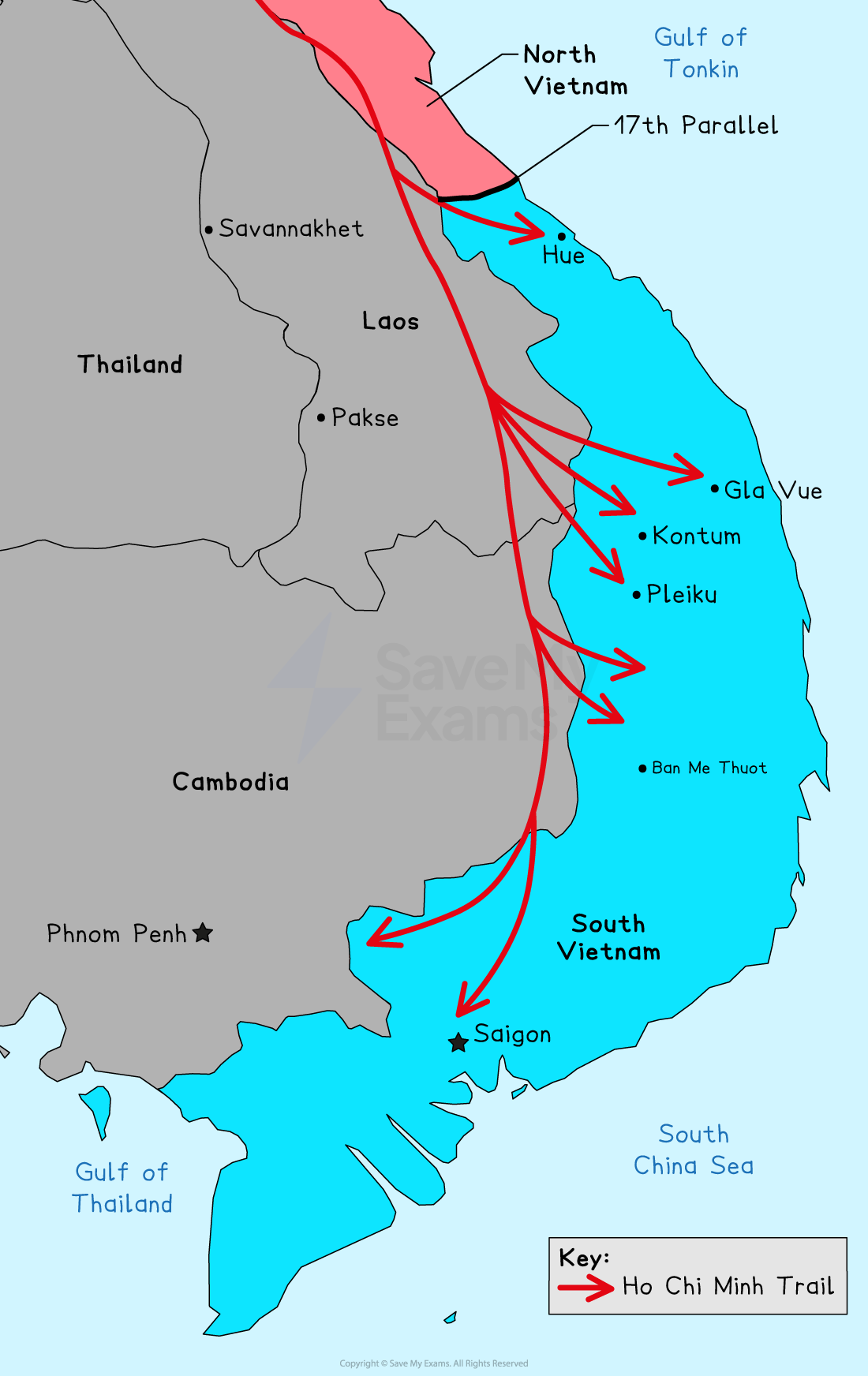South Vietnam After 1954 (AQA GCSE History): Revision Note
Exam code: 8145
South Vietnam - Summary
The leader of South Vietnam, Ngo Dinh Diem, became deeply unpopular with large sections of the South Vietnamese population. His brutal attempts to suppress his opponents led to protests and an armed rebellion by the National Liberation Front (NLF). These armed rebels were trained and supplied by communist North Vietnam and were soon being called the Vietcong.
Diem attempted to crush the Vietcong, but the Vietcong fought a guerrilla war and its soldiers were hard to track down and identify. The Vietcong were very popular with peasants in the countryside, and as more and more land came under Vietcong control, civil war broke out in South Vietnam.
Opposition to Diem
The US backed Ngo Dinh Diem to become the leader of South Vietnam because he was strongly anti-communist
However, he was also corrupt, introduced new taxes and crushed any opposition
This made him deeply unpopular with many South Vietnamese people
Diem announced that elections were to be held in just the south of Vietnam in October 1955, despite nationwide elections being promised in 1956 as part of the Geneva Agreement
Diem won the election, with 98.2% of the votes cast choosing him to be president
Many historians have questioned how free, fair and accurate the election was
Over 100,000 people were imprisoned for opposing Diem in the run-up to the election
This did not stop his critics, who organised themselves into two main groups; Buddhists and the NLF
Buddhist opposition to Diem
Buddhism had been present in Vietnam since the 2nd century CE
Diem was Catholic, and he restricted Buddhists’ freedom to worship
When nine Buddhists were shot dead by government troops during banned religious celebrations, Buddhist protests intensified
These protests included indirect action, such as marches, hunger strikes and, most famously, Buddhist monks burning themselves to death
These protests attracted widespread international press attention and caused people to question Diem’s leadership
National Liberation Front opposition to Diem
The NLF brought together a wide range of Diem’s political opponents but soon became dominated by communists
The NLF took direct action:
They killed hundreds of people who worked in Diem’s government
Diem used the Army of the Republic of Vietnam (ARVN) to try and crush the NLF
The NLF took to the jungle to hide and then launched their attacks from there
The ARVN leaders called the NLF “Viet Nam Cong San”, which means Vietnamese communist
They were soon being called the Vietcong for short
The Vietcong
The Vietcong aimed to overthrow Diem’s government and create a united and independent Vietnam
They were supported by people from all across Vietnamese society; not all of whom were communists
Nationalists wanted to reunite the country
They included:
Poor peasants who had been taxed heavily by Diem
Middle class professionals who saw Diem’s government as corrupt and unfair
From 1959 onwards, the Vietcong were supported by North Vietnam and supplied with instructions and training, as well as weapons and equipment
This was delivered along supply routes that became known as the Ho Chi Minh Trail
The Ho Chi Minh Trail stretched from North Vietnam, through the neighbouring countries of Loas and Cambodia, before emerging in the jungles of South Vietnam

Civil war in the south
Large areas of the countryside in South Vietnam soon came under the control of the Vietcong
Diem instructed the ARVN, supplied with American weapons, to take back control of these areas
The result was a civil war
The Vietcong waged a guerrilla war against Diem and the ARVN
The Vietcong soldiers did not wear uniforms, so it was impossible to identify them amongst the peasant farmer population
They left booby traps and launched surprise attacks
They planned to drag the war out for years and launch thousands of small attacks rather than large, crushing defeats
The Vietcong knew the remote jungle areas well and were supported by the local populations

Examiner Tips and Tricks
Questions 1 and 2 on this paper require you to use your contextual knowledge. This means you must explain the background situation to enable you to identify why a source is useful or what its intended message is.

Unlock more, it's free!
Did this page help you?